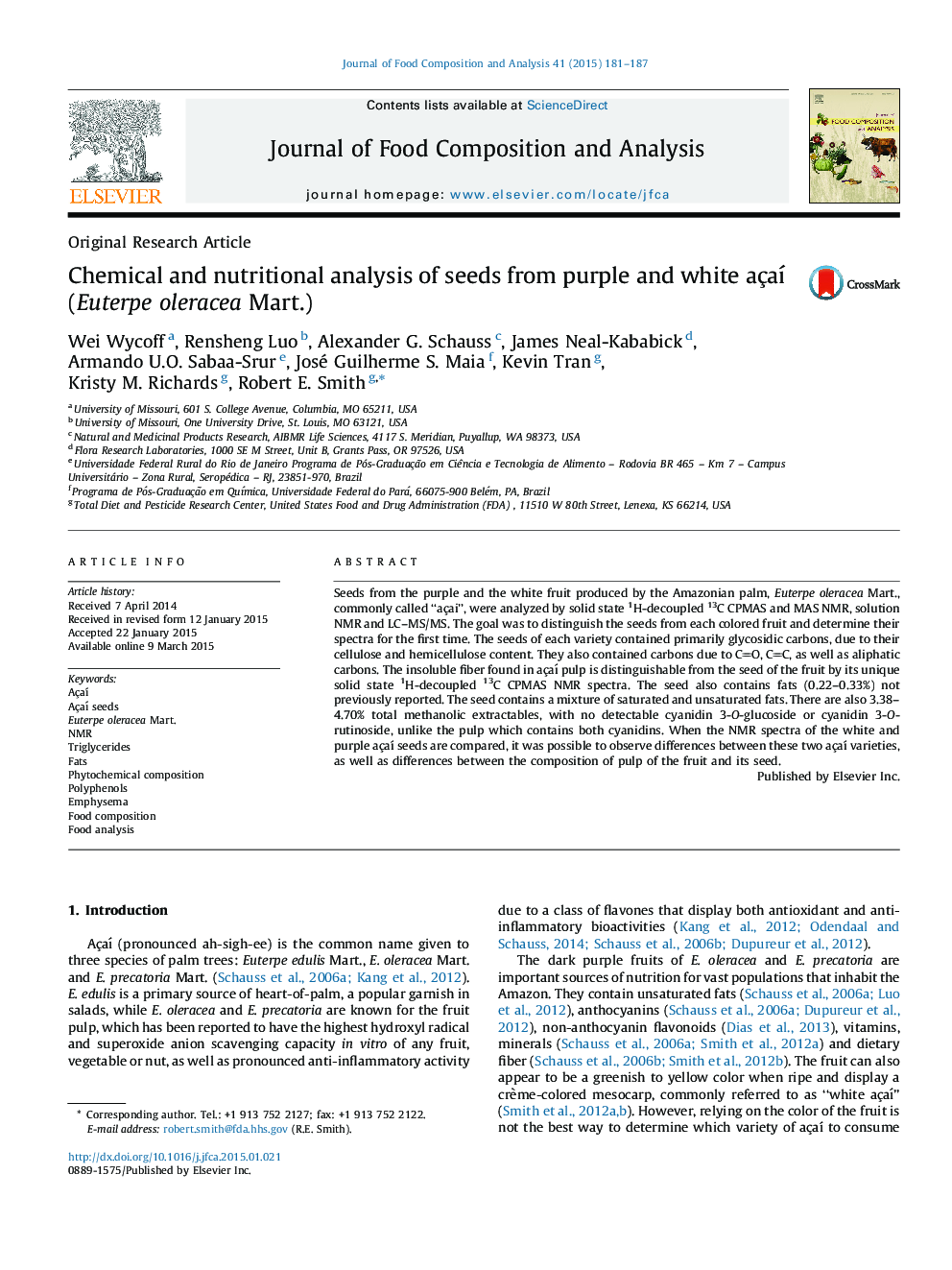| کد مقاله | کد نشریه | سال انتشار | مقاله انگلیسی | نسخه تمام متن |
|---|---|---|---|---|
| 1218231 | 1494501 | 2015 | 7 صفحه PDF | دانلود رایگان |

• NMR methods are described for distinguishing between açaí seeds and fruit.
• Purple and white açaí seeds contain cellulose, hemicellulose and 0.22–0.33% fats.
• The seeds also contain and 3.38–4.70% total methanolic extractables.
• The seeds do not have any cyanidin 3-O-glucoside or cyanidin 3-O-rutinoside.
Seeds from the purple and the white fruit produced by the Amazonian palm, Euterpe oleracea Mart., commonly called “açai”, were analyzed by solid state 1H-decoupled 13C CPMAS and MAS NMR, solution NMR and LC–MS/MS. The goal was to distinguish the seeds from each colored fruit and determine their spectra for the first time. The seeds of each variety contained primarily glycosidic carbons, due to their cellulose and hemicellulose content. They also contained carbons due to CO, CC, as well as aliphatic carbons. The insoluble fiber found in açaí pulp is distinguishable from the seed of the fruit by its unique solid state 1H-decoupled 13C CPMAS NMR spectra. The seed also contains fats (0.22–0.33%) not previously reported. The seed contains a mixture of saturated and unsaturated fats. There are also 3.38–4.70% total methanolic extractables, with no detectable cyanidin 3-O-glucoside or cyanidin 3-O-rutinoside, unlike the pulp which contains both cyanidins. When the NMR spectra of the white and purple açaí seeds are compared, it was possible to observe differences between these two açaí varieties, as well as differences between the composition of pulp of the fruit and its seed.
Journal: Journal of Food Composition and Analysis - Volume 41, August 2015, Pages 181–187